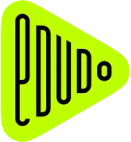How social learning platform plans and tracks product development
How social learning platform plans and tracks product development

Product company 🚀
11-50 ppl 🎩
Entertainment Software 👻
Switched from Notion 😎
EduDo is a mobile learning platform with short user-generated interactive videos for on-the-go self-development. The system they built in Fibery helps the product team prioritize ideas seamlessly and ensures the engineering team works at full capacity.





“Fibery is the best flexible tool that I've ever seen. It has great potential to scale and allows to create great visibility for all team members.
It can be a bit complicated at the start mostly because of the endless customization options (domain flexibility is 🦄 and 💩 at the same time), so pre-made workspaces and templates help a lot.
Fibery also has the best customer support via Intercom, thanks Polina.”
Dig into workspaces & workflows of some awesome companies:
Dig into workspaces & workflows of some awesome companies:

How B2B SaaS manages roadmap and feedback in Fibery
Masraff
customer story

How B2B SaaS manages roadmap and feedback in Fibery
Masraff
customer story
TEMPLATES MENTIONED
Customer Feedback
Product Management
Meetings

How Vandrouka uses Fibery for game development
Vandrouka
customer story

How Vandrouka uses Fibery for game development
Vandrouka
customer story
TEMPLATES MENTIONED
Product Management
Retrospectives
Custom No-Code Spaces
Gitlab Integration

How Lemonade's tech team connects strategy to execution in Fibery
Lemonade
customer story

How Lemonade's tech team connects strategy to execution in Fibery
Lemonade
customer story
TEMPLATES MENTIONED
OKR Tracking
Slack
Software development
Customer Feedback

How HR startup turns user research into product insights
Smartwage
customer story

How HR startup turns user research into product insights
Smartwage
customer story
TEMPLATES MENTIONED
Product Management
User Research
All this content is for you, not for SEO (doesn't work anyway)
All this content is for you, not for SEO (doesn't work anyway)


